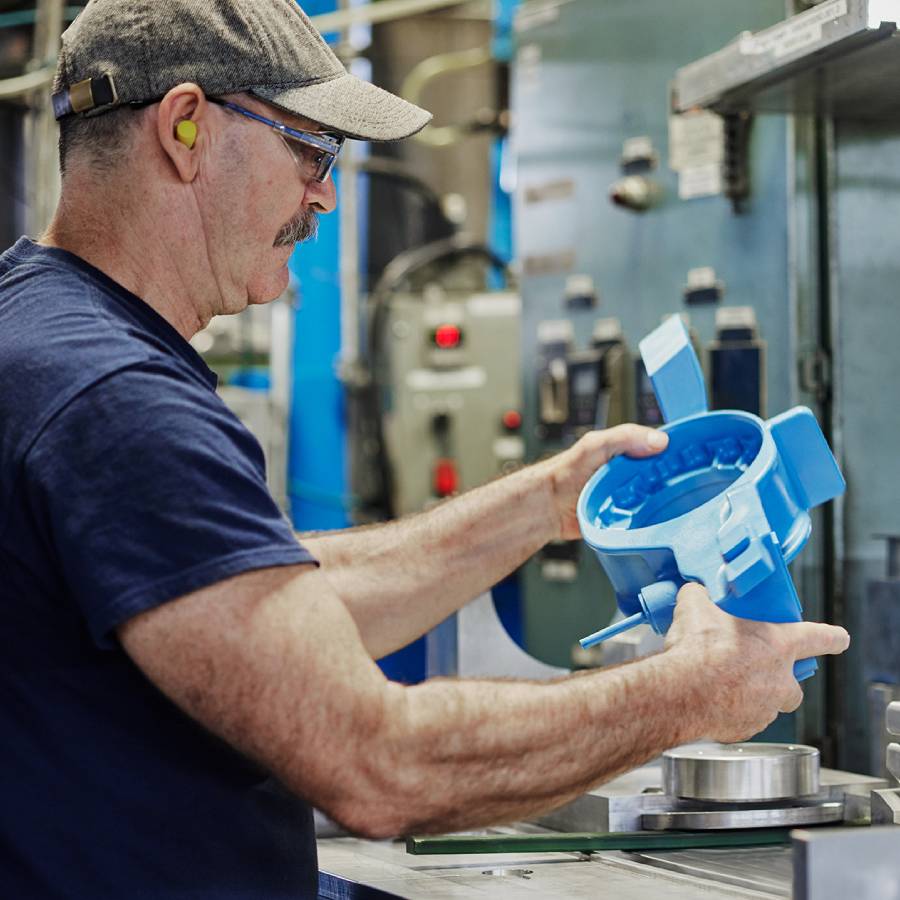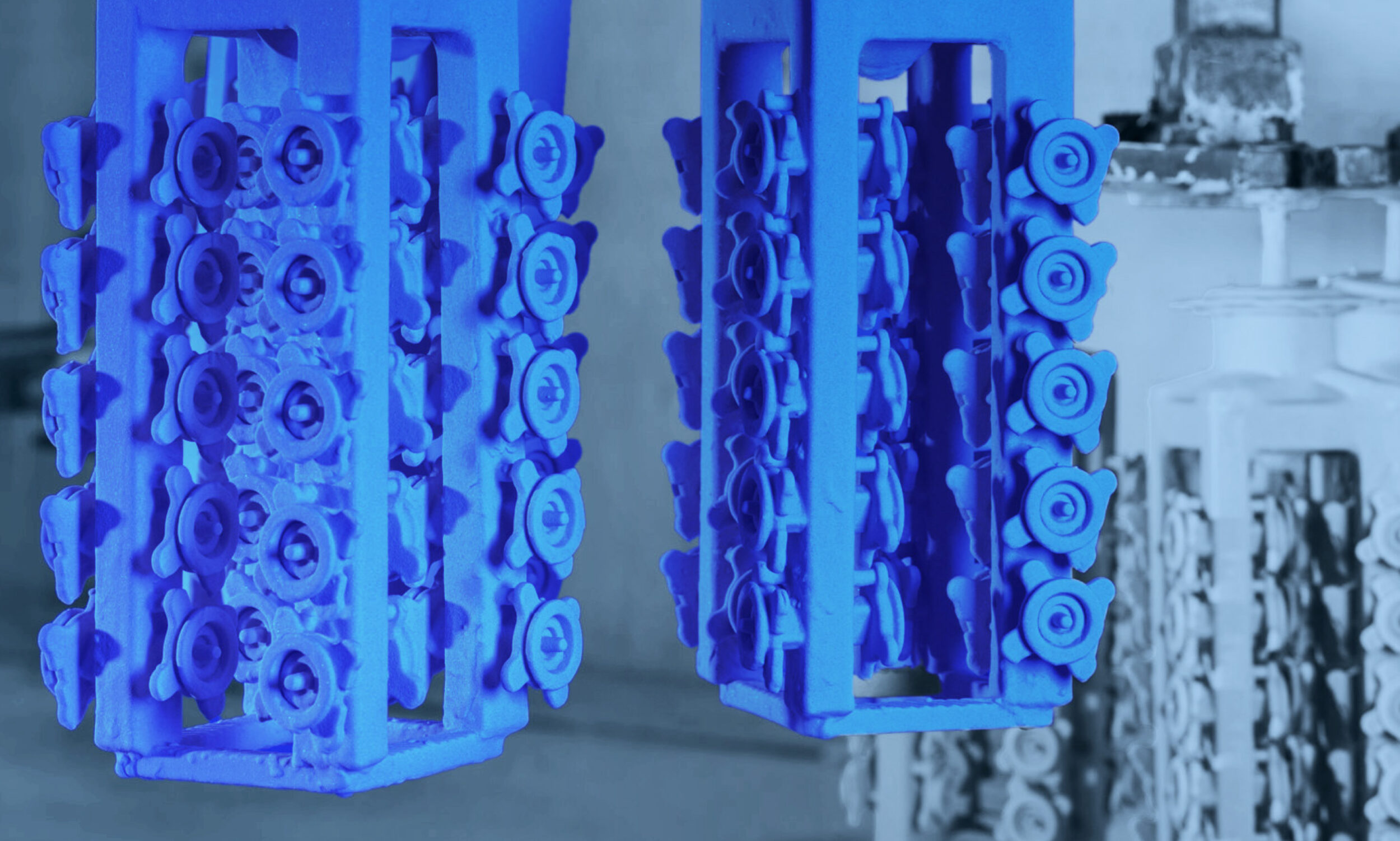Steps in the Investment Casting Process
Investment casting is also known as precision casting or lost-wax casting; here’s how it works:
- Pattern Creation: The process starts with the creation of a pattern, typically made from wax or a similar material. This pattern is an exact replica of the final part to be produced.
- Assembly: The wax patterns are attached to a central wax runner system, forming what is called a “tree.” This assembly is then enclosed in a ceramic shell to create a mold.
- Wax Removal: The ceramic shell mold is heated, which causes the wax to melt and flow out, leaving behind a cavity in the shape of the final part. Hence, it’s often referred to as “lost-wax casting.”
- Molten Metal Casting: Once the wax is removed, the ceramic shell is filled with molten metal, which takes the shape of the cavity.
- Cooling and Solidification: The metal inside the mold is allowed to cool and solidify, taking on the shape of the desired part.
- Shell Removal: After solidification, the ceramic shell is broken and removed, revealing the metal casting.
Our team uses a unique multi-dimensional straightening technique to ensure that each part meets the required specifications.
Advantages and Disadvantages of Investment Casting
Investment casting is an ideal manufacturing process for producing metal parts with precision, reliability, and high-quality finishes.
Here are some of the benefits of investment casting:
- Precision and reliability in the result
- Cost-effective, mainly if repeatability is applied
- Speed of execution, especially in order renewals
- Elimination of oxidation and metal contamination (with Vestshell’s method of pouring directly from the melting crucible to the mold)
- Quality control by N.D.T. testing when the foundry is certified
- Complete freedom of design with no limit to the complexity and detail of parts
- Prototyping using computer-aided techniques
- Compliance with the strictest standards and dimensional tolerances
- Little or no machining is required
- Some foundries, such as Vestshell, offer finished castings ready for assembly.
While lost wax casting has numerous advantages, some drawbacks could limit us in the production of your pieces:
Time: The Investment Casting process is typically longer than some other casting processes due to the step of creating wax patterns, making the ceramic shells, and cooling the molten metal.
Size Limits: Investment Casting is less suited to significant pieces. The process can become prohibitive for large components due to the cost and time required.
At Vestshell, we are committed to providing our customers with high-quality investment castings that meet their specific needs and requirements.
Our team of experts uses state-of-the-art equipment and techniques to ensure that each part is produced with the highest level of precision and consistency.
Comparison with Other Casting Processes
Investment casting allows for casting a wide range of materials, including steel, aluminum, and titanium alloys, providing exceptional flexibility to meet various requirements.
One of the significant advantages of investment casting is that the parts produced are often free of porosity and surface irregularities, making them ideal for applications requiring exceptional quality and finish.
This is because the investment casting process allows for the creation of parts with intricate geometries and smooth surface finishes, which are difficult to achieve with other casting methods.
Industries and Products that Use Investment Casting
Investment casting is a versatile manufacturing process used in various industries to create a wide range of products and components. It is considered the best option for high-end industries, such as aerospace, medical and automotive, which require metal parts with exceptional quality and precision, and investment casting is the go-to method for producing such parts.
Some of the key industries and products that commonly utilize investment casting include:
Military and defence
- Ammunition racks
- Air armament components
- Artillery components
- Launcher components
- Weapon components
- Ground mobile vehicle components
Aerospace
- Aircraft engine components
- Levers
- Pump casing
- Landing gear components
Medical
- External knee prosthesis
- External hand prosthesis
- Surgical instruments
- Mobility equipment components
- Laryngoscope
Automotive industry
- Engine and transmission components,
- Intake manifolds
- Cylinder heads
- Suspension
- Steering system parts

